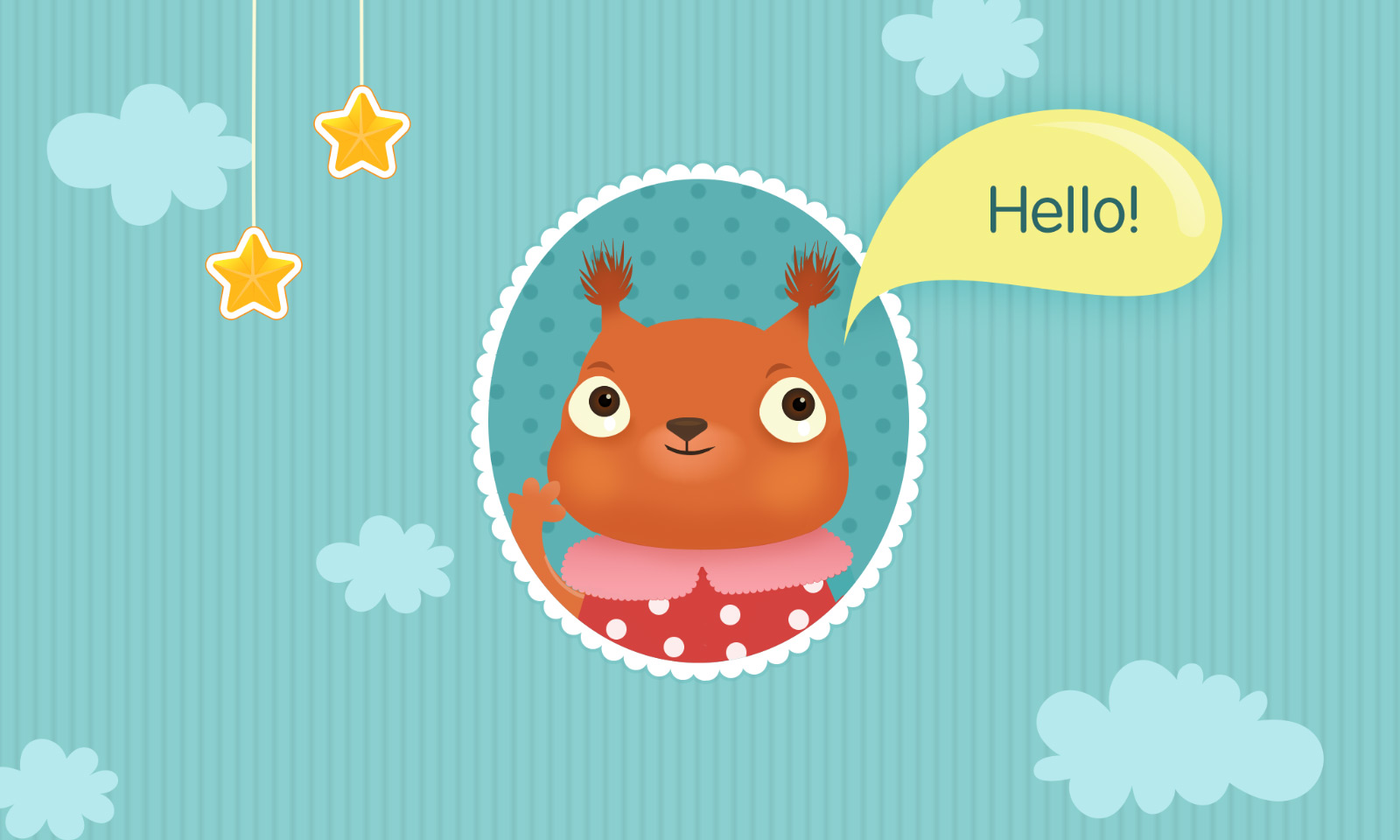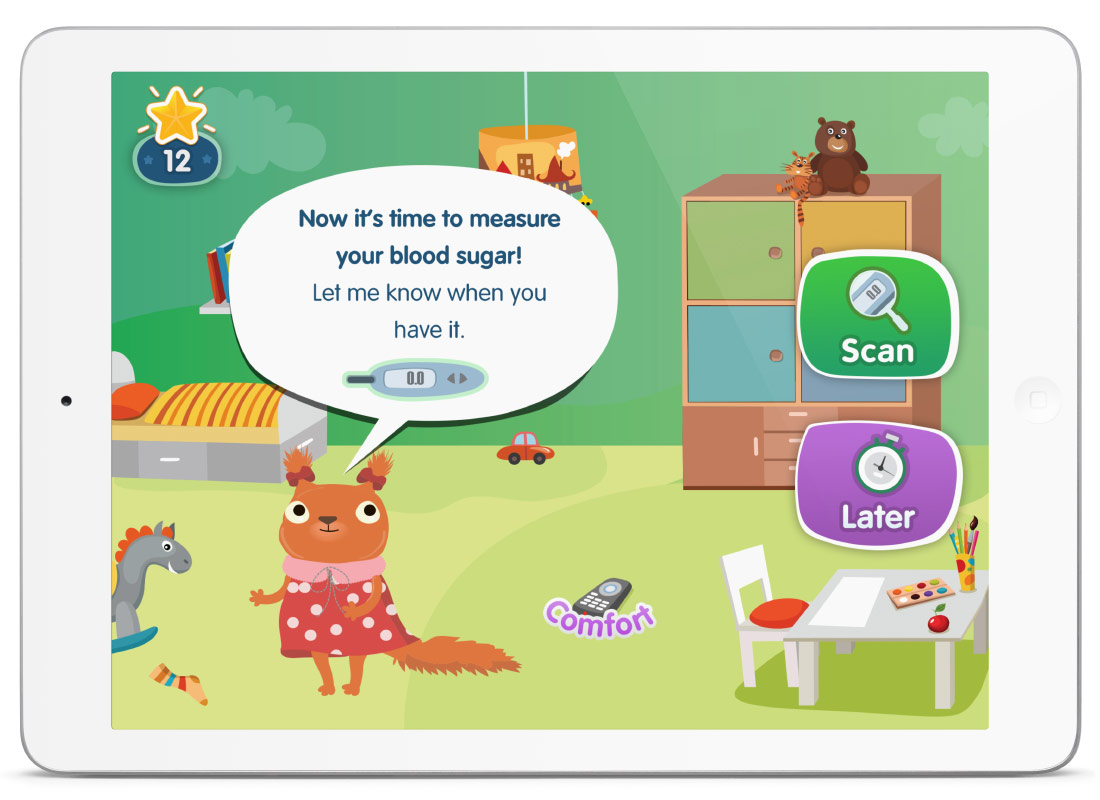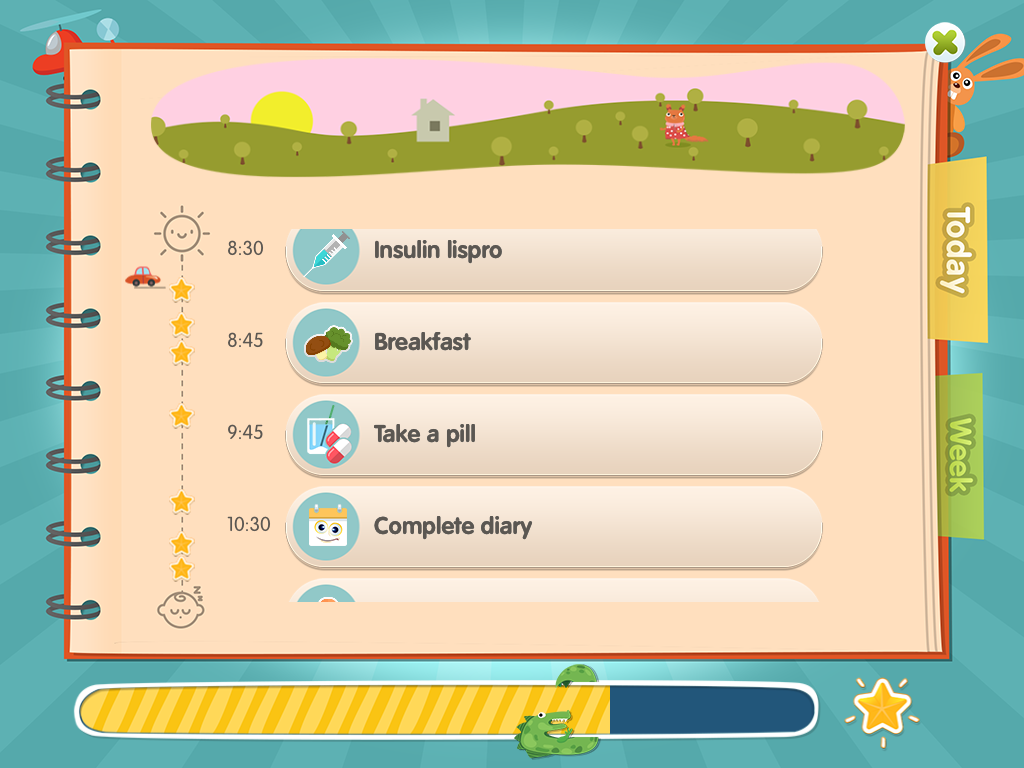KidPRO - the story of a squirrel helping children

The DataArt practice team won the Pfizer Healthcare Challenge 2017 competition . She introduced KidPRO, a solution for children and parents that allows children and adults to follow the course of treatment in two related applications.
In an application for children, an interactive animated protein helps a child: reminds you when you need to take a medicine, tells you what happens to it, awards for each doctor’s prescription. Thus, paradoxically, the child becomes interested in treatment.
In 2015, the app ranked third in the InnovateNYP: Pediatric App Challenge .
Two years later, we developed the idea, won, and we were invited to speak and present our achievements at the prestigious Frontiers Health conference.
KidPRO belongs to an actively developing category of medical applications that go far beyond the usual notifiers and alarm clocks, - Beyond Reminder Apps. They help patients comply with the treatment regimen, collect and analyze information, even educate children and parents. The development of the DataArt team is a fully finished prototype, which you can learn more about on the site of our R & D center.
The essence of the application

At the beginning of work on the idea, the application was planned to be used as inpatient (for children in the hospital) for clinical studies, but later we thought that it could be used at home, because some diseases require constant monitoring.

Understanding that for safe and effective treatment, control from adults is needed, we have created another application already for parents - care companion. Care companion allows you to customize the children's part of the application, taking into account the dose and frequency of taking necessary medications, filling out a diary and questions about the child's well-being.
For feedback, Care companion receives all the data collected by the application for the child, analyzes them and shows the parents in the form of clear charts. The “adult” application guides the patient’s parents through the treatment process and allows you to track the child’s condition using historical data on the most important indicators. Already in an adult language, the application tells you what, recommends a treatment schedule, a diet, a degree of activity that is desirable for a child.

In addition to this, we created an interface for access from the observing doctor’s child, where you can also set up the child’s day and get all the data from the child’s application, following the dynamics of the patient’s well-being.
According to studies, one of the factors of unsatisfactory compliance with prescriptions is the fear of side effects and the belief that you can stop treatment after the symptoms disappear. Therefore, we have added a learning module to the application, in which both the child and parents can learn more about the disease, side effects and recommendations.

We believe that an application or system works when it covers the needs of the target audience, so we tried to focus on one of the chronic diseases - diabetes. To do this, we added the power tracking functions (calories / carbs) to the application, the ability to scan the meter so that the application can recognize the numbers on the device screen and display the blood sugar level.
How to develop
The correct electronic patient-reported outcome (ePRO) system should be not only understandable, but also interesting for the child, and it should have a number of features that allow combining a serious professional medical program with game elements. What we tried to do in KidPRO.
To make this happen, the team applied considerable knowledge in the field of design and user experience, mHealth (health & care applications supported by mobile devices) and gamification elements accumulated in DataArt. Unlike existing similar products, KidPRO uses many aspects of the gamification method to interest and motivate young patients in the study and turns its participation into a fun and rewarding process.

Squirrel life
At first we thought about tamagotchi. But when analyzing the target audience, the applications quickly came to the conclusion that the Tamagotchi concept is not fully suitable for us: if you do not take care of the virtual pet correctly, it can die. And our target audience - children with chronic diseases - they are constantly under stress. Therefore, we decided to use the mechanisms of positive reinforcement. We drew several versions of characters, from which, thanks to the collection of feedback from children, we chose a squirrel.

In our application, the child and the protein are treated together: the protein also takes medicine and is sad when the child feels unwell. Thus, the child feels that he is not alone, that he has a virtual friend who is always there, empathy arises. Moreover, the child for the performance of tasks of the character receives certain bonuses-stars, which can then be spent on new outfits or toys for a squirrel - to please a friend and enjoy himself.

Why such an application is necessary and relevant
The first aspect is obvious - in the form of a game it is easier to treat the child (although, of course, no game application will make the medication tastier). But there is a second aspect concerning the development of medicine in general.
A couple of years, Daniel Picard , working with one of the clients in the field of clinical trials, faced with the fact that ePro-systems for working with participants in clinical research are ineffective. The task of such a system is to collect data: symptoms after taking the next dose of medication, side effects, how the patient assesses the effectiveness of treating the disease, etc. The ePRO systems, at that time, contained essentially digitized questionnaires and other documents that the subjects must fill out during research. Because of the low level of usability, they almost never did.
Clinical research is a very long and laborious process that requires large resources and costs. His main problem is to attract participants. For example, only 3% of potential patients voluntarily participate in oncological clinical trials. This is an extremely low figure, and many studies are impossible to conduct due to the shortage of participants. In addition, not all participants are ready to go to the end and follow all the rules of the protocol.
The reason may be a lack of motivation and interest in the process, lack of awareness and understanding of the common problem, negative perceptions and fears of an adverse outcome. This issue is particularly acute in clinical studies for children, who are already participating in research much less frequently than adults (by the way, 70% of the drugs were tested only on adults). Researchers are trying to do everything possible to correct this situation, to cause patients a positive reaction and a desire to contribute to the future of pharmacology.

Therefore, clinical studies have turned to the method of gamification - the use of the principles of the game in a non-player context. During research it can help the patient to create a positive impression about the test itself and about the product being studied, to win its interest and attention to the general problem. This can help not only increase the number of patients, but also reduce the cost of research and the time it takes to search and select people.
The game usually involves the ultimate goal and reward. Therefore, another method of managing motivation is surprises and rewards, for example, points for participation or completeness of the entered information (on symptoms and well-being), which can then be exchanged for prizes. The desire to get additional marks or the opportunity to move to the next level may encourage the research participant to continue, to continue the game.
Interactive interaction with the system and the game context allow children to better understand the essence of the research, involve them in the process. This approach helps to turn the routine procedure of collecting information into a fun and useful game. The animated character is not a doctor (sometimes a frightening figure), but a cheerful friend.
The collection of objective data is another important problem of clinical studies, especially those related to children: the child cannot always fill out the forms correctly, can skip some items or forget to enter the results. To prevent this from happening, the control and participation of relatives is required. For such purposes, a parent module is made in such applications, where parents can see what is being filled and follow the schedule and attach comments to the child's records.
Future KidPRO
The KidPRO team has a serious development plan for the application:
- Additional setting. Although current use revolves around diabetes, it can really help with any clinical condition. However, to make it more attractive for different categories of young patients (different age groups, for example, adolescents), we are going to completely update the user interface of the application.
- New elements of the game. We are going to introduce new characters, types of rewards, set up an environment (for example, “room”) and embed mini-games and other ways to better engage a child.
- Improved FHIR integration. With improved FHIR integration, the app will add more information about the treatment plan and prescriptions so that the doctor can use this information to prepare an individual daily patient schedule.
- Analytics and personalized content. The application features allow you to analyze the treatment process and aspects of the interaction (for example, how many times the child has watched a certain video) and recommend actions based on this. For example, if a child doesn’t diet properly, he or she may be asked to watch a video about the importance of diet more often.
- Notifications. If the child misses certain procedures or routine activities, the parent will be notified. Important events, such as a doctor's check, can be scheduled directly in the calendar of the parent's device.
- Stationary and outpatient modes. When a patient visits a hospital, the application provides additional information and instructions.
All Articles